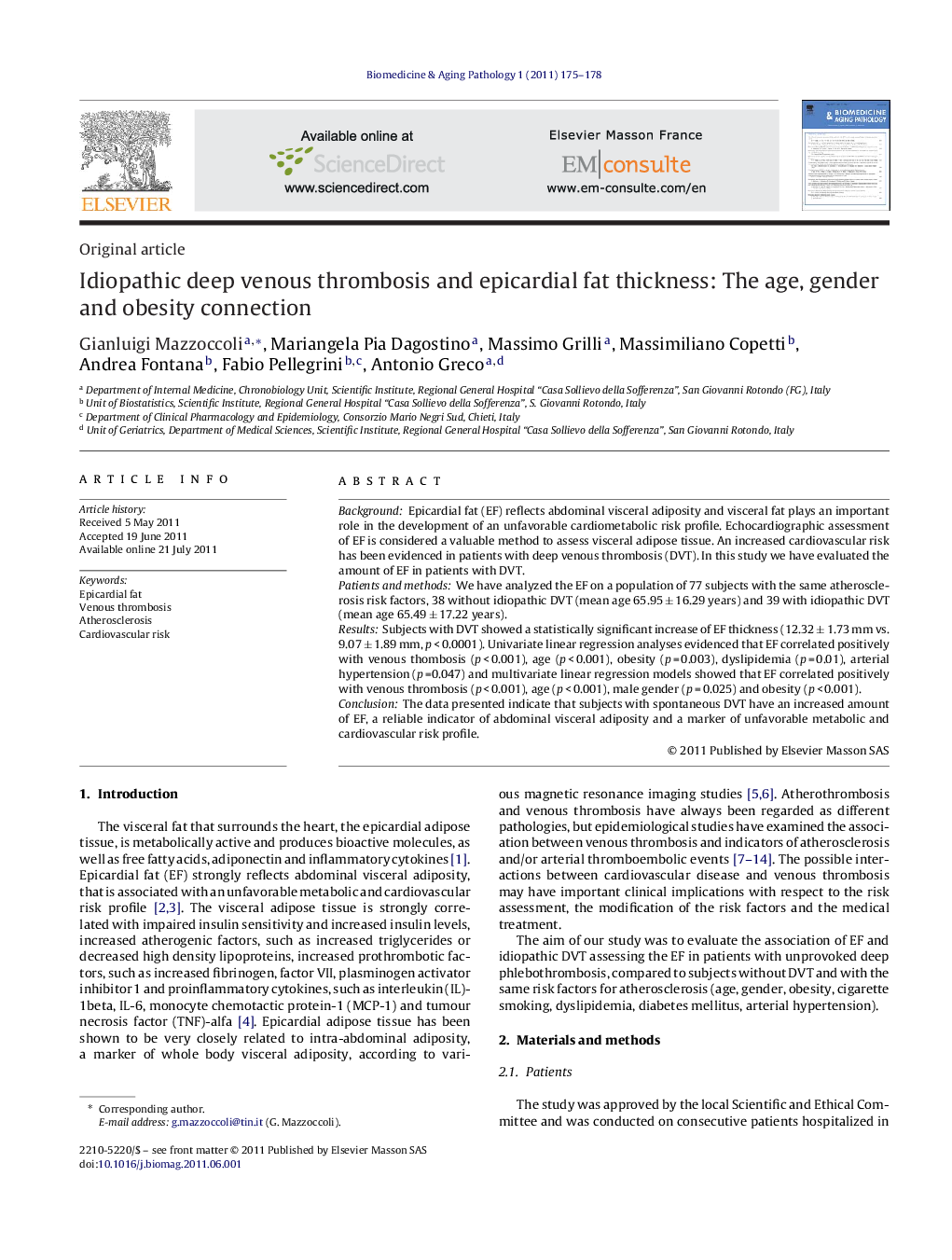| Article ID | Journal | Published Year | Pages | File Type |
|---|---|---|---|---|
| 2576346 | Biomedicine & Aging Pathology | 2011 | 4 Pages |
BackgroundEpicardial fat (EF) reflects abdominal visceral adiposity and visceral fat plays an important role in the development of an unfavorable cardiometabolic risk profile. Echocardiographic assessment of EF is considered a valuable method to assess visceral adipose tissue. An increased cardiovascular risk has been evidenced in patients with deep venous thrombosis (DVT). In this study we have evaluated the amount of EF in patients with DVT.Patients and methodsWe have analyzed the EF on a population of 77 subjects with the same atherosclerosis risk factors, 38 without idiopathic DVT (mean age 65.95 ± 16.29 years) and 39 with idiopathic DVT (mean age 65.49 ± 17.22 years).ResultsSubjects with DVT showed a statistically significant increase of EF thickness (12.32 ± 1.73 mm vs. 9.07 ± 1.89 mm, p < 0.0001). Univariate linear regression analyses evidenced that EF correlated positively with venous thombosis (p < 0.001), age (p < 0.001), obesity (p = 0.003), dyslipidemia (p = 0.01), arterial hypertension (p =0.047) and multivariate linear regression models showed that EF correlated positively with venous thrombosis (p < 0.001), age (p < 0.001), male gender (p = 0.025) and obesity (p < 0.001).ConclusionThe data presented indicate that subjects with spontaneous DVT have an increased amount of EF, a reliable indicator of abdominal visceral adiposity and a marker of unfavorable metabolic and cardiovascular risk profile.
